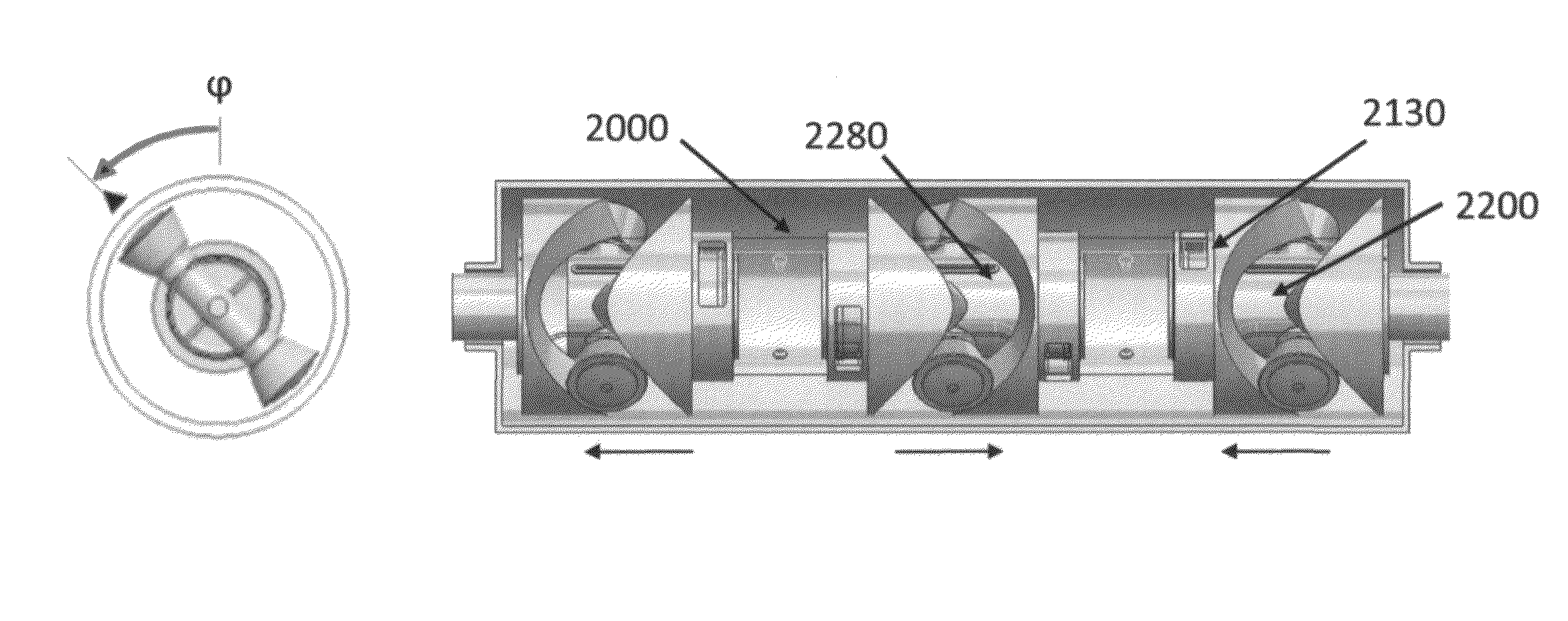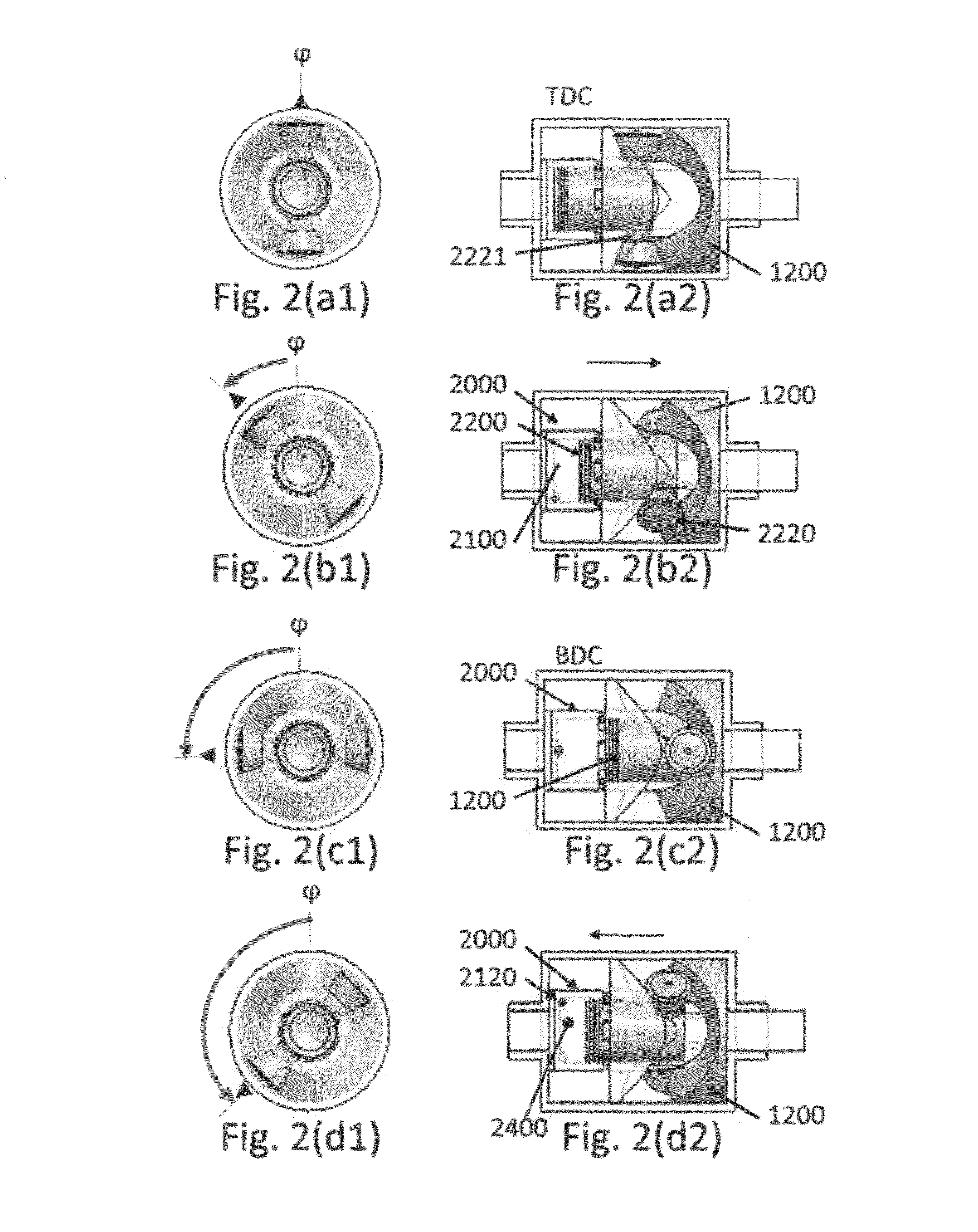Barrel cam rotating cylinder engine
a rotating cylinder and barrel cam technology, applied in the direction of liquid fuel engines, machines/engines, mechanical equipment, etc., can solve the problems of engine efficiency reduction and engine with high frontal area
- Summary
- Abstract
- Description
- Claims
- Application Information
AI Technical Summary
Benefits of technology
Problems solved by technology
Method used
Image
Examples
Embodiment Construction
[0056]Improved engine designs that include reduced numbers of parts, lower friction losses, reduced vibration, and smaller frontal area would greatly benefit automotive and aircraft applications. Frontal area reductions would be especially beneficial for aircraft applications, due to the reduced drag contribution of the engines and their cowlings. Traditional piston engine designs, with piston rods, crankshafts, and cam driven valves are inherently burdened by high part counts, sizable friction losses, and large frontal areas. Even advancements in rotary engines and opposed piston configurations continue to be limited in the efficiencies they can produce in many of these attribute areas.
[0057]A new engine configuration should be lighter in weight and preferably have a reduced frontal area profile for improved installation suitability. For automotive applications, a reduced frontal area profile would permit the engine to fit compactly in narrow spaces. For light aircraft applications...
PUM
 Login to View More
Login to View More Abstract
Description
Claims
Application Information
 Login to View More
Login to View More - R&D
- Intellectual Property
- Life Sciences
- Materials
- Tech Scout
- Unparalleled Data Quality
- Higher Quality Content
- 60% Fewer Hallucinations
Browse by: Latest US Patents, China's latest patents, Technical Efficacy Thesaurus, Application Domain, Technology Topic, Popular Technical Reports.
© 2025 PatSnap. All rights reserved.Legal|Privacy policy|Modern Slavery Act Transparency Statement|Sitemap|About US| Contact US: help@patsnap.com



